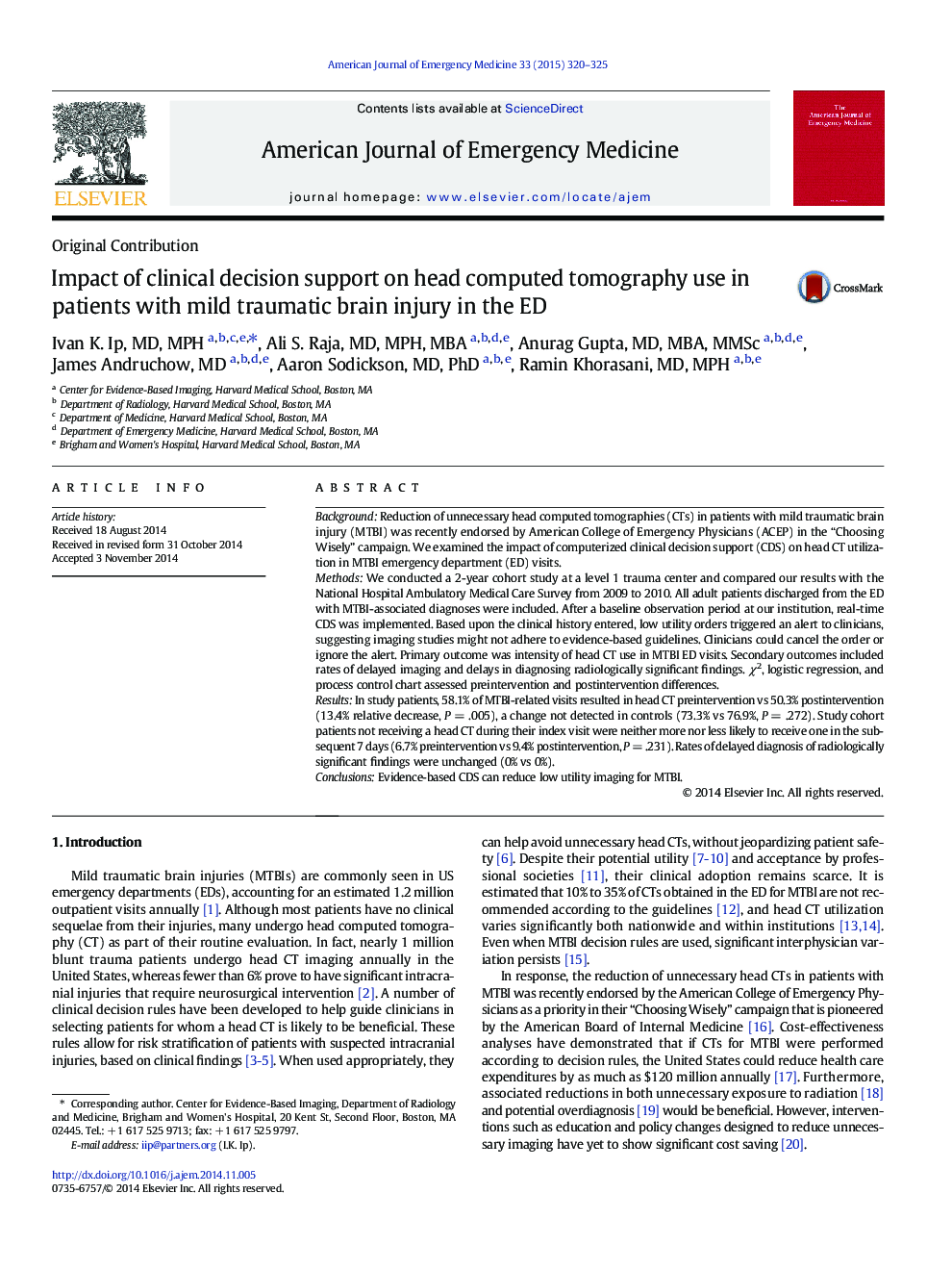| Article ID | Journal | Published Year | Pages | File Type |
|---|---|---|---|---|
| 3224759 | The American Journal of Emergency Medicine | 2015 | 6 Pages |
BackgroundReduction of unnecessary head computed tomographies (CTs) in patients with mild traumatic brain injury (MTBI) was recently endorsed by American College of Emergency Physicians (ACEP) in the “Choosing Wisely” campaign. We examined the impact of computerized clinical decision support (CDS) on head CT utilization in MTBI emergency department (ED) visits.MethodsWe conducted a 2-year cohort study at a level 1 trauma center and compared our results with the National Hospital Ambulatory Medical Care Survey from 2009 to 2010. All adult patients discharged from the ED with MTBI-associated diagnoses were included. After a baseline observation period at our institution, real-time CDS was implemented. Based upon the clinical history entered, low utility orders triggered an alert to clinicians, suggesting imaging studies might not adhere to evidence-based guidelines. Clinicians could cancel the order or ignore the alert. Primary outcome was intensity of head CT use in MTBI ED visits. Secondary outcomes included rates of delayed imaging and delays in diagnosing radiologically significant findings. χ2, logistic regression, and process control chart assessed preintervention and postintervention differences.ResultsIn study patients, 58.1% of MTBI-related visits resulted in head CT preintervention vs 50.3% postintervention (13.4% relative decrease, P = .005), a change not detected in controls (73.3% vs 76.9%, P = .272). Study cohort patients not receiving a head CT during their index visit were neither more nor less likely to receive one in the subsequent 7 days (6.7% preintervention vs 9.4% postintervention, P = .231). Rates of delayed diagnosis of radiologically significant findings were unchanged (0% vs 0%).ConclusionsEvidence-based CDS can reduce low utility imaging for MTBI.
